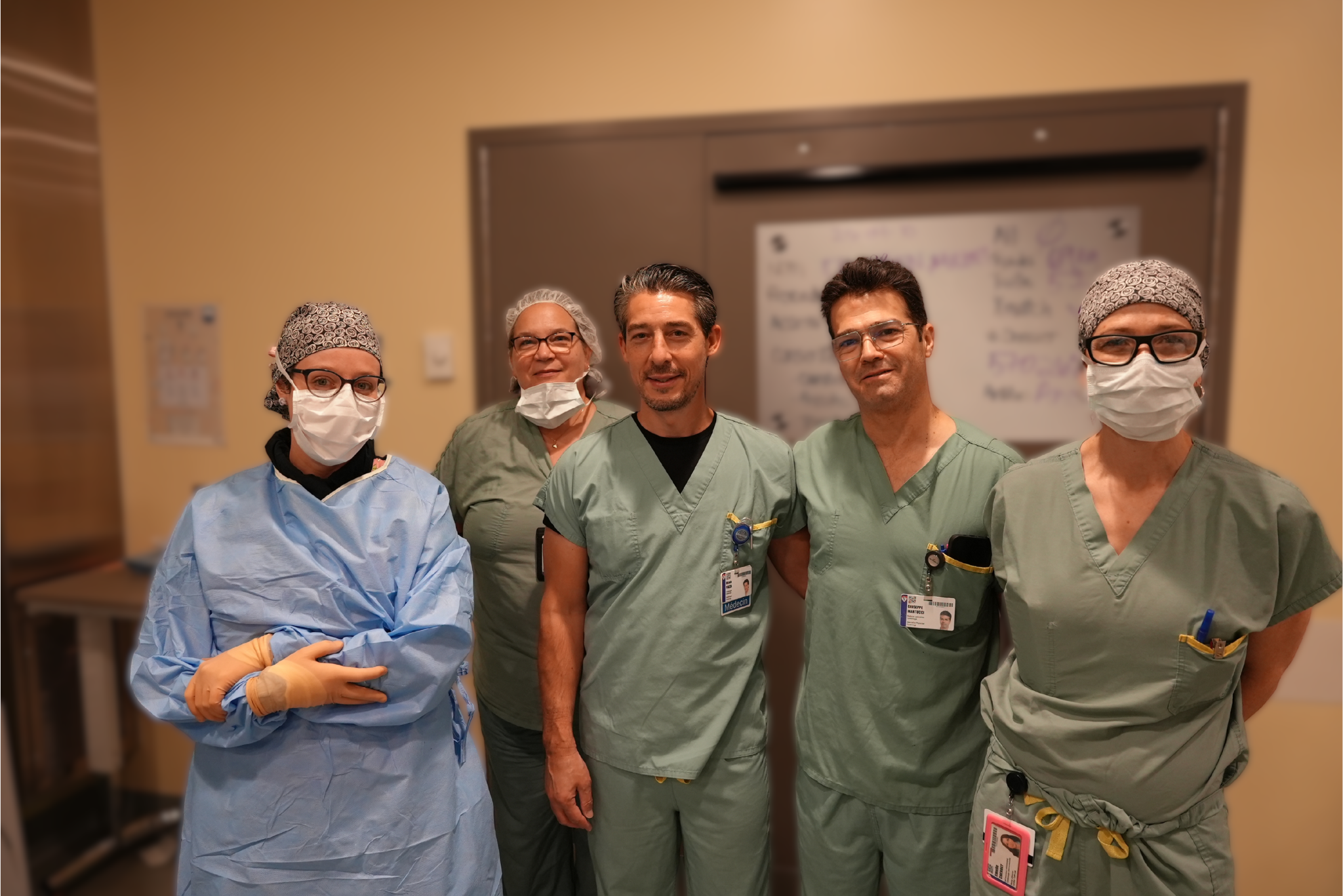MUHC continues to lead in aortic valve treatment innovation with new-generation implant
For over a decade, the McGill University Health Centre (MUHC) has been at the forefront of aortic valve innovation, advancing how we treat cardiac patients through minimally invasive approaches. That legacy began in 2007 and was consolidated in 2013, when MUHC physicians performed the world’s first repositionable transcatheter aortic valve procedure on a patient with severe aortic stenosis—avoiding the need for open-heart surgery.
Now, building on that pioneering legacy, the MUHC has reached another national milestone. On April 9, 2025, a team led by Dr. Nicolo Piazza and Dr. Giuseppe Martucci, cardiologists at the Cardiac Catheterization Laboratory (Cath Lab) and co-directors of the Structural Heart Program at the MUHC, was the first in Canada to implant a new generation valve that offers more options for treatment down the line.
Transcatheter aortic valve implantation (TAVI) involves threading a new heart valve through a small catheter, typically inserted via a blood vessel in the leg, instead of opening the chest. This less invasive approach leads to shorter hospital stays—sometimes as little as one or two days—and carries a lower risk of complications compared to traditional surgery.
Severe aortic stenosis is a condition in which the aortic valve becomes narrowed, making it harder for blood to flow from the heart to the rest of the body. This increases the workload on the heart and can cause symptoms such as chest pain, fainting, or heart failure. In 2022, it was estimated that 2.5 % of the Canadian population had heart valve disease increasing significantly after the age of 65 reaching 13% after the age of 75, according to the Alberta Institute of Health Economics. Once symptoms appear, the average patient survival is two years without treatment.
A long-term approach to heart patient care
The updated valve Evolut FX+, developed by Medtronic, features built-in openings that are four times larger than previous models, allowing doctors to access the coronary arteries even after the valve has been implanted.
“The new design gives us better access to the heart’s arteries if the patient ever needs another procedure like a stent,” said Dr. Piazza. “TAVI is becoming more common in younger patients, so we are taking a long-term approach to care. If these patients face urgent issues like heart attacks, ensuring easier access to their coronary arteries could make a big difference in the care we can provide.”

Another major improvement is the valve’s enhanced placement accuracy—now exceeding 96 percent—which supports better valve performance and helps the device function more naturally inside the heart.
“This is a perfect example of how medical technology is constantly evolving to make healthcare more efficient and patient-friendly,” says Dr. Piazza. “It is also a testament to the incredible skill, dedication and teamwork of our Cath Lab. Every member of the team—from nurses and technologists to imaging specialists and physicians—plays a vital role in making these advanced procedures possible," said Dr. Nicolo Piazza.

Directed by Dr. Elvin Kedhi and managed by Marc-Antoine Ladouceur, the MUHC’s Cath Lab is at the heart of hospital-based complex cardiology. It delivers a full range of basic and advanced diagnostic and interventional procedures, contributing among other things to major advancements in aortic valve innovation and patient care. Its work is proudly supported by the MUHC Foundation.
